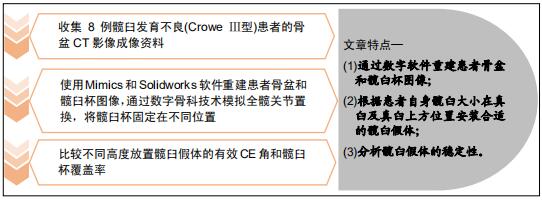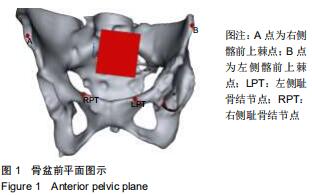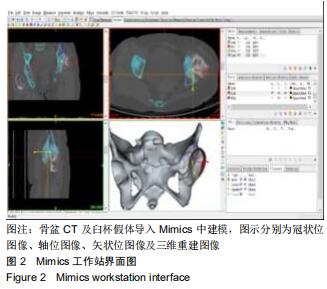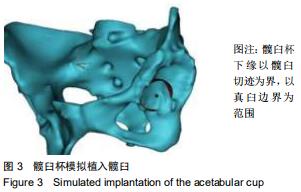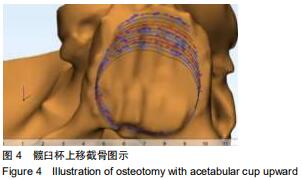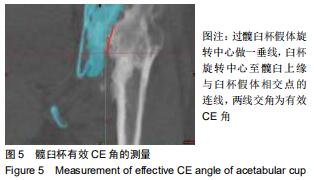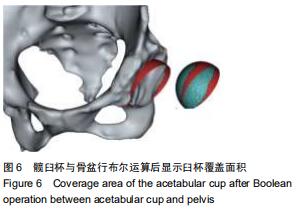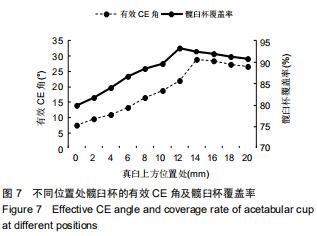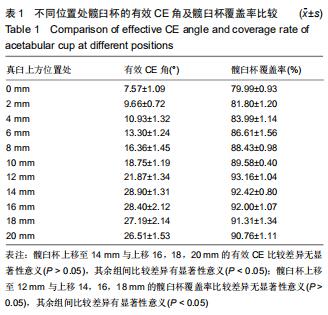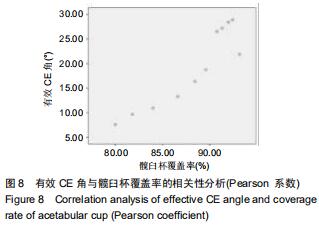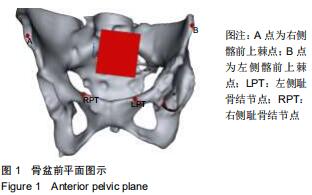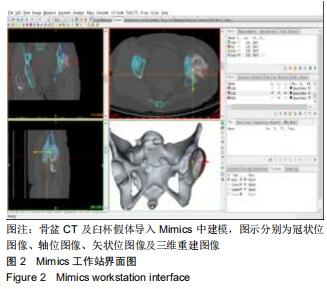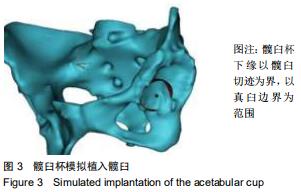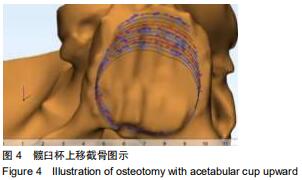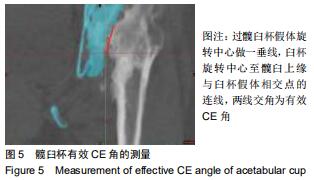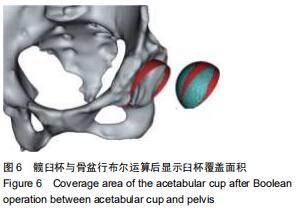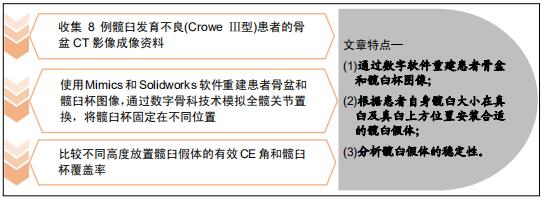|
[1] HARRIS WH. Etiology of osteoarthritis of the hip.Clin Orthop and Relat Res.1986;21(3):20-23.
[2] HARTOFILAKIDIS G, STAMOS K, KARACHALIOS T, et al. Congenital hip disease in adults Classification of acetabular deficiencies and operative treatment with acetabuloplasty combined with total hip arthroplasty.J Bone Joint Surg Am. 1996;78(5):683-692.
[3] CROWE JF, MANI VJ, RANAWAT CS. Total hip replacement in congenital dislocation and dysplasia of the hip.J Bone Joint Surg Am.1979;61(1):15-23.
[4] ZHANG H, ZHOU JS, GUAN JZ, et al. How to restore rotation center in total hip arthroplasty for developmental dysplasia of the hip by recognizing the pathomorphology of acetabulum and Harris fossa?.J Orthop Surg Res.2019;14(1):1-8.
[5] PAGNANO MW, HANSSEN AD, LEWALLEN DG, et al. The effect of superior placement of the acetabular component on the rate of loosening after total hip arthroplasty.J Bone Joint Surg Am.1996;78(7):1004-1014.
[6] DANDACHLI W, NAKHLA A, IRANPEUR F, et al. Can the acetabular position be derived from apelvic frame of reference?Clin Orthop Relat Res.2009;467(4):886-893.
[7] CAMERON HU, EREN OT, SOLOMON M. Nerve injury in the prosthetic management of the dysplastic hip.Orthopedics. 1998;21(9):980-981.
[8] KANEUJI A, SUGIMORI T, ICHISEKI T, et al. Minimum ten-year results of a porous acetabular component for Crowe I to III hip dysplasia using an elevated hip cecnter.J Arthroplasty. 2009;24(2):187-194.
[9] MURAYAMA T, OHMISHI H, OKABE S, et al. 15-year comparison of cementless total hip arthroplasty with anatomical or high cup placement for Crowe I to III hip dysplasia.Orthopedics.2012;35(3):313-318.
[10] NAWABI DH, MEFTAH M, NAM D, et al. Durable fixation achieved with medialized, high hip center cementless THAs for Crowe II and III dysplasia.Clin Orthop Relat Res. 2014; 472(2):630-636.
[11] DIGIOIA AM, HAFEZ MA, JARAMAZ B, et al. Functional pelvic orientation measured from lateral standing and sitting radiographs.Clin Orthop Relat Res.2006;45(3):272-276.
[12] SARIALI E, BOUKHELIFA N, CATONNE Y, et al. Comparison of Three-Dimensional Planning-Assisted and Conventional Acetabular Cup Positioning in Total Hip Arthroplasty: A Randomized Controlled Trial.J Bone Joint Surg Am. 2016; 98(2):108-116.
[13] VANDENBUSSCHE E, SAFFARINI M, TAILLIEU F, et al. The asymmetric prfile of the acetabulum.Clin Orthop Relat Res. 2008;466(2):417-423.
[14] SCHUTZER SF, HARRIS WH. High placement of porous-coated acetabular components in complex total hip arthroplasty.J Arthroplasty.1994;9(4):359-367.
[15] FUKUI K, KANEUJI A, SUGIMORI T, et al. How far above the true anatomic position can the acetabular cup be placed in total hip arthroplasty? Hip Int.2013;23(2):129-134.
[16] XU J, XU C, MAO Y, et al. Posterosuperior placement of a standard-sized cup at the true acetabulum in acetabular reconstruction of developmental dysplasia of the Hip with high dislocation.J Arthroplasty.2016;31(6):1233-1239.
[17] ZAHAR A, PAPIK K, LAKATOS J, et al. Total hip arthroplasty with acetabular reconstruction using a bulk autograft for patients with developmental dysplasia of the hip results in high loosening rates at mid-term follow-up.Int Orthop. 2014; 38(5):947-951.
[18] GERBER SD, HARRIS WH. Femoral head autografting to augment acetabular deficiency in patients requiring total hip replacement. A minimum five-year and an average seven-year follow-up study.J Bone Joint Surg Am. 1986;68(8): 1241-1248.
[19] MULROY RD, HARRIS WH. Failure of acetabular autogenous grafts in total hip arthroplasty.Increasing incidence:a follow-up note.J Bone Joint Surg Am.1986;72(10): 1536-1540.
[20] ENER N, REMZI T, AK M. Femoral shortening and cementless arthroplasty in high congenital dislocation of the hip. J Arthroplasty.2002;17(1):41-48.
[21] HARTOFILAKIDIS G, STAMOS K, KARACHALIOS T. Treatment of high dislocation of the hip in adults with total hip arthroplasty.Operative technique and long-term clinical results. J Bone Joint Surg Am.1998;80(4):510e7.
[22] XU JW, XU C, MAO YQ, et al. Posterosuperior placement of standard-sized cup at the true acetabulum in acetabular reconstruction of developmental dysplasia of the hip with high dislocation. J Arthroplasty.2016;31(6):1233e9.
[23] KOMIYAMA K, FUKUSHI JI, MOTOMURA G, et al. Does high hip centre affect dislocation after total hip arthroplasty for developmental dysplasia of the hip?. Int Orthop.2019;43(9): 2057-2063.
[24] TRAINA F, DE FM, BIONDI F, et al. The influence of the centre of rotation on implant survival using a modular stem hip prosthesis.Int Orthop.2009;33(6):1513-1518.
[25] TRAINA F, DE FM, TASSINARI E, et al. Modular neck prostheses in DDH patients: 11-year results.J Orthop Sci. 2011;16(1):14-20.
[26] BARTZ RL, NOBEL PC, KADAKIA NR, et al. The effect of femoral component head size on posterior dislocation of the artificial hip joint.J Bone Joint Surg Am. 2000;82(9): 1300-1307.
[27] COOPER HJ, DELLA VALLE CJ. Large diameter femoral heads is bigger always better?. Bone Joint J. 2014;96-B(11 Suppl A):23-26.
[28] KOHNO Y, NAKASHIMA Y, FUJII M, et al. Acetabular retroversion in dysplastic hips is associated with decreased 3D femoral head coverage independently from lateral center-edge angle.Arch Orthop Trauma Surg. 2019. doi:10.1007/s00402-019-03277-6.
[29] MAHIEU P, HANANOUCHI T, WATANABE N, et al. Morphological abnormalities of the femur in the dysplastic hip. Relation between femur en acetabulum.Acta Orthop Belg. 2018;84(3):307-315.
[30] ROGERS BA, GARBEDIAN S, KUCHINAD RA, et al. Total hip arthroplasty for adult hip dysplasia.J Bone Joint Surg Am. 2012;94(19):1809-1821.
[31] YANG YH, ZUO JL, LIU T, et al. Morphological Analysis of True Acetabulum in Hip Dysplasia (Crowe Classes I-IV) Via 3-D Implantation Simulation.J Bone Joint Surg Am. 2017; 99(17):e92.
[32] TSUTSUI T, GOTO T, WADA K, et al. Efficacy of a computed tomographybased navigation system for placement of the acetabular component in total hip arthroplasty for developmental dysplasia of the hip.J Orthop Surg Res. 2017; 25(3):1-7.
[33] BAGARIA V, DESHPANDE S, RASALKAR DD, et al. Use of rapid prototyping and three- dimensional Reconstruction modeling in the management of complex fractures.Eur J Radiol.2011;80(3):814-820.
|
